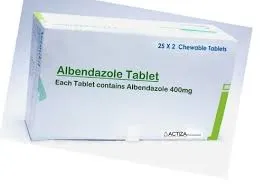- Afrikaans
- Albanian
- Amharic
- Arabic
- Armenian
- Azerbaijani
- Basque
- Belarusian
- Bengali
- Bosnian
- Bulgarian
- Catalan
- Cebuano
- Corsican
- Croatian
- Czech
- Danish
- Dutch
- English
- Esperanto
- Estonian
- Finnish
- French
- Frisian
- Galician
- Georgian
- German
- Greek
- Gujarati
- Haitian Creole
- hausa
- hawaiian
- Hebrew
- Hindi
- Miao
- Hungarian
- Icelandic
- igbo
- Indonesian
- irish
- Italian
- Japanese
- Javanese
- Kannada
- kazakh
- Khmer
- Rwandese
- Korean
- Kurdish
- Kyrgyz
- Lao
- Latin
- Latvian
- Lithuanian
- Luxembourgish
- Macedonian
- Malgashi
- Malay
- Malayalam
- Maltese
- Maori
- Marathi
- Mongolian
- Myanmar
- Nepali
- Norwegian
- Norwegian
- Occitan
- Pashto
- Persian
- Polish
- Portuguese
- Punjabi
- Romanian
- Russian
- Samoan
- Scottish Gaelic
- Serbian
- Sesotho
- Shona
- Sindhi
- Sinhala
- Slovak
- Slovenian
- Somali
- Spanish
- Sundanese
- Swahili
- Swedish
- Tagalog
- Tajik
- Tamil
- Tatar
- Telugu
- Thai
- Turkish
- Turkmen
- Ukrainian
- Urdu
- Uighur
- Uzbek
- Vietnamese
- Welsh
- Bantu
- Yiddish
- Yoruba
- Zulu
Дек . 12, 2024 20:56 Back to list
oxytetracycline 20 injection 100ml veterinary
Oxytetracycline 20% Injection for Veterinary Use An Overview
Oxytetracycline is a broad-spectrum antibiotic that belongs to the tetracycline class of antibiotics. It is widely used in veterinary medicine for the treatment of various bacterial infections in animals. One common formulation is the 20% injection, typically available in a 100 ml bottle, which is used to treat livestock and companion animals alike. This article will delve into the uses, benefits, administration, and safety considerations of oxytetracycline 20% injection in veterinary settings.
Uses and Indications
Oxytetracycline is effective against a variety of gram-positive and gram-negative bacteria, making it a valuable tool in treating infections in animals. It is commonly prescribed for diseases such as pneumonia, metritis, and urinary tract infections. The antibiotic is particularly effective in treating infections caused by organisms such as Mycoplasma, Chlamydia, and some strains of E. coli.
Veterinarians often recommend oxytetracycline for livestock, including cattle, sheep, and pigs, due to its efficacy against respiratory disease, which can severely impact animal health and productivity. In companion animals, it can be used for skin infections, dental procedures, and other bacterial complications. The versatility of oxytetracycline makes it a staple in veterinary practices.
Administration and Dosage
The oxytetracycline 20% injection is usually administered through intramuscular or subcutaneous routes. The dosage depends on several factors, including the type of animal, the severity of the infection, and the veterinarian’s discretion. Generally, a common dosage for cattle might be around 6 to 10 mg per kg of body weight, but this can vary based on the specific case and the recommendation of the veterinarian.
Before administering the injection, it is crucial to ensure that the medication is free from impurities and to check for any expiration date. The injection site should be clean and free from any visible contamination to minimize the risk of infection. Proper administration techniques are essential to avoid causing pain or discomfort to the animal.
Benefits
oxytetracycline 20 injection 100ml veterinary

One of the significant advantages of oxytetracycline is its broad-spectrum activity. This allows veterinarians to treat a range of infections effectively, reducing the need for multiple medications. Additionally, the injectable form provides quick absorption into the bloodstream, leading to rapid therapeutic effects.
Oxytetracycline is generally well-tolerated by most animals, and adverse reactions are rare when administered appropriately. Its long half-life also allows for less frequent injections, which can be more convenient for both the veterinarian and the caregiver.
Safety and Precautions
While oxytetracycline is a valuable antibiotic in veterinary medicine, it is not without potential side effects. Some animals may experience allergic reactions, gastrointestinal disturbances, or changes in gut flora. Overuse or misuse of antibiotics, including oxytetracycline, can lead to antibiotic resistance, which is a significant concern in both human and veterinary medicine.
It is crucial to adhere strictly to the veterinarian's prescription and not to exceed the recommended dosages. Farmers and animal caretakers should be educated about the importance of completing the entire course of treatment to prevent the development of resistant bacteria.
Additionally, oxytetracycline is not recommended for use in pregnant animals, as it can potentially interfere with fetal development. Withdrawal times for food animals also need to be observed carefully to ensure that no antibiotic residues remain in meat, milk, or eggs intended for human consumption.
Conclusion
Oxytetracycline 20% injection is an essential tool in the arsenal of veterinary medicine. Its broad-spectrum activity, effectiveness in treating various infections, and ease of administration make it a popular choice among veterinarians. Nonetheless, its use comes with responsibilities, including proper administration, adherence to dosages, and consideration of withdrawal times. As with all antibiotics, careful management is essential to preserve their efficacy and ensure the health of our animals and the safety of food products.
-
Guide to Oxytetracycline Injection
NewsMar.27,2025
-
Guide to Colistin Sulphate
NewsMar.27,2025
-
Gentamicin Sulfate: Uses, Price, And Key Information
NewsMar.27,2025
-
Enrofloxacin Injection: Uses, Price, And Supplier Information
NewsMar.27,2025
-
Dexamethasone Sodium Phosphate Injection: Uses, Price, And Key Information
NewsMar.27,2025
-
Albendazole Tablet: Uses, Dosage, Cost, And Key Information
NewsMar.27,2025













